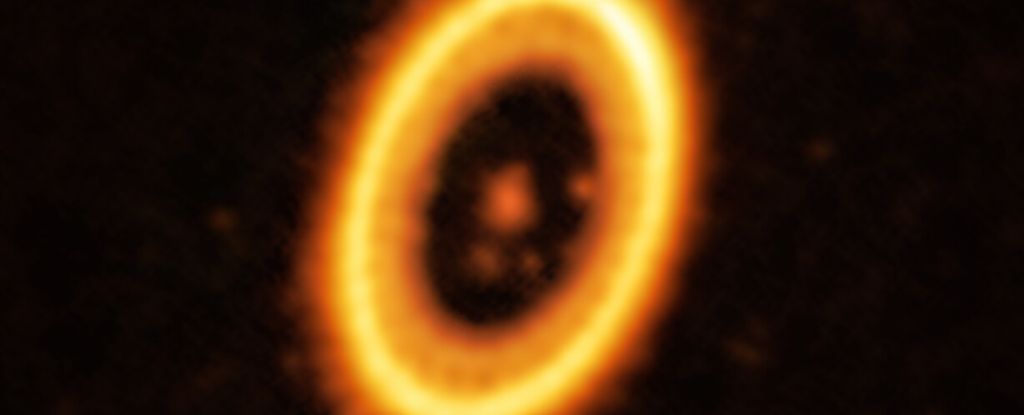 The Solar System is a fairly tidy place.Each planet stays in its lane, at its own orbital distance from the Sun, minding its own business.
The Solar System is a fairly tidy place.Each planet stays in its lane, at its own orbital distance from the Sun, minding its own business.
Most planetary systems we’ve found out there in the wider galaxy also seem to follow this trend.According to theory, though, two planets could share the same orbit – and now, for the first time, astronomers think we might have evidence of this in a baby planetary system some 370 light-years from Earth.
These orbit-sharing worlds are known as Trojan planets, or, for exoplanets, exotrojans, after
populations of asteroids that share the orbit of Jupiter, hanging out in gravitationally stable points along its orbit.
“Two decades ago, it was predicted in theory that pairs of planets of similar mass may share the same orbit around their star, the so-called Trojan or co-orbital planets.For the first time, we have found evidence in favor of that idea,”
says astrophysicist Olga Balsalobre-Ruza of the Center for Astrobiology in Spain.
The system in which the discovery was made is already famous:
PDS-70.It was here that we saw, for the first time, direct images of not just one but two exoplanets in the process of forming, baby gas giants named PDS-70b and PDS-70c.Here, too, astronomers found evidence of a moon-forming disk around one of the proto-exoplanets, PDS-70c.
Now, a closer look has revealed evidence of something – a blob fainter than the exoplanet – sharing the orbit of PDS-70b.
Calculations suggest that whatever it is has up to around twice the mass of Earth’s Moon.
And while that blob isn’t a planet – yet – researchers are excited about its location.
It’s sitting in a spot known as a
Lagrange or Lagrangian point.
Each two-body system has five of these points: three along the line (L1, L2, and L3) connecting the two bodies and two (L4 and L5) along the smaller body’s orbit.They’re pockets of space where the gravitational interaction between the two bodies balances with the centripetal force required for a smaller body to move with them.
Jupiter
collects asteroids in its L4 and L5, collectively known as Trojan asteroids.Earth has a couple of Trojan asteroids, too.They’re also good places to park space observatories; the home of the JWST is in one of the Earth-Sun Lagrangians.So it stands to reason that something a bit bigger could park in one of these handy spots, but we’d found scant evidence.
It seems appropriate that we would find it in the PDS-70 system, lurking in the
L5 Lagrangian.
“Who could imagine two worlds that share the duration of the year and the habitability conditions? Our work is the first evidence that this kind of world could exist,”
Balsalobre-Ruza says.”We can imagine that a planet can share its orbit with thousands of asteroids as in the case of Jupiter, but it is mind-blowing to me that planets could share the same orbit.”
At the moment, the orbital partner is probably a thick cloud of dust, the building blocks of a new planet, rather than a whole planet.This could help us not only understand the likelihood of the formation of exotrojans but also the formation of planetary systems.
For example, Jupiter is thought to have collected
its trojans over time and migration from a point farther from the Sun.
Studying the Jupiter-like PDS-70b could elucidate that theory.
We’re going to have to wait, just a little, for answers, though.The team will need to look at the system again in 2026 to see if the blob is moving along with PDS-70b as a co-orbital companion in the L5 Lagrangian.
“This would be a breakthrough in the exoplanetary field,”
Balsalobre-Ruza says.
The research has been published in
Astronomy & Astrophysics..
